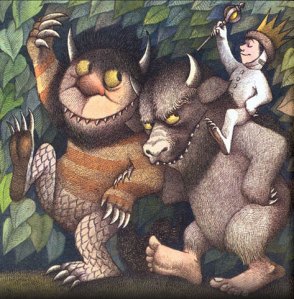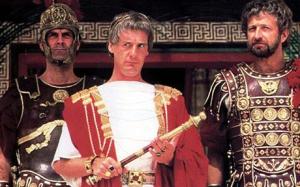Youth, maturity, sex, reproduction, predation, blood and immortality. Yes, Hallowe’en is nearing again.

And with it the tales of vampires and the sexual innuendo that its mythological image screams. Reproduction and immortality, the seduction of death and of sex, the profoundly disturbing and yet enticing images of blood, virginity, seduction, youth and initiation into maturity. But these images have subtly changed culturally — following a biological pattern that has also changed in ways now writ large in our society as whole. Seductive deceits of love, living and immortality are not limited to vampires — though vampires speak of them in deep mythic terms.
Regardless of one’s theological proclivities — Mother Nature does not brook deception without deep consequence — which people — being people — do their level best to ignore as long as possible — whistling past the graveyard all the way. But we know graveyards — deep down there is no fooling us, and putting pretty cover on it doesn’t help — in fact it may makes things worse and even more troubling …
Studies show that the advent of the contraceptive pill in the 1960s’ has altered the way that men and women choose their mates. This has been most noted in the trends of leading men’s appearance in film and the distinct change of physiognomy from the strong secondary sex markers of very masculine to more boyish men. The mechanism of sexual selection on both sides seems to be implicated from male detection of fertility indications that are also in play in altering women’s own sexual perceptions or preferences. Thus, instead of the chiseled-jaw image of Kirk Douglas, Burt Lancaster, Sean Connery and Steve McQueen; we have the much more boyish faces of Johnny Depp, Christian Bale, Leonardo diCaprio and too many other to list. A similar trend however also exists from the opposite perspective — from the earlier popularity of very womanly figures to the more sexually ambiguous girlish waif-types. We have seen a marked change from images of desirable leading women at the box office and in pinups — from the buxom and shapely Betty Grable, Betty Page, Jane Mansfield, and Marilyn Monroe to the waifish-girlish looks of Rachel Weitz, Winona Ryder, Keira Knightley, Cate Blanchett, Kirsten Dunst, etc.
However, while the shift at the center of the distribution has been quite noticeable — it has not been so terribly great — certainly within the normal range of human body types. The problem lies, as with all things, at the margins — the outer ends of the distribution of social behaviors and tendencies — the darker and equally repellent and seductive areas of human experience. To these areas — our tales of vampires both point and warn — with oddly repelling and welcoming arms.
Forget, for a moment, that we are intelligent, rational creatures and remember that we are also lustful, often predatory, irrational primates. What does this trend mean on the outer margins where the sweet light of reason and temperance shines but dimly — if at all. Think in socio-biological terms. If the more obvious secondary sexual maturity markers are missing or diminished and reproductive success is the driving factor, then waiting for optimum fertility, which is now largely concealed is a loser’s game. The winning strategy is early (in maturation terms) and frequent attempts at reproduction, so as to maximize chances of success. That would suggest a hypothesis that in addition to the preferences for secondary sex characters shifting to a less “mature” profile we should also see overt sexual behavior increasing toward the actually sexually immature or barely mature. And indeed, this is what has happened, statistically .
The rate of first intercourse at age 15 has risen from 5% in 1970 to 26% in 1988. For age 17 the rate has climbed from 32% to 51%. In terms of stability of social arrangements the age shift toward immaturity is correlated to other changes. In 1960 5% of births were to unmarried women; in 1975 14% and by 2002 34% of births were to unmarried women. These changes are similar in proportion in the U.S ( where net fertility is stable, and population growth is slightly positive ) and in western European countries (where net fertility is negative, and populations are actually beginning to shrink). These changes correlate also to greater incidents of predatory sexual deviance toward the young and sexually immature or barely mature, a problem that, while hardly non-existent, was not a major societal hazard much heard of sixty years ago and yet actively, and universally feared now. The change in popular taste for images of sexual predators has likewise changed.
Since Bram Stoker first popularized the sexual predator as the seductive, immortal blood-thirsty killer, there has been a strong element of sexual predation in the vampire tale, changing in similar ways as the social data. This trend is seen in the intermediate mode in Frank Langella’s 1979 Dracula, neither old nor young, and yet not as craggy or manly as Lugosi or Christopher Lee (1931 and 1958 , respectively). The ancient-to-young transition is actually given an express role in one film, the later version of Gary Oldman’s 1993 Dracula, who was magnificent in an otherwise mediocre vehicle.




The more recent resurgence of Vampire tales and films continues this trend. In Anne Rice’s work, especially, the haunting image of the tragic and eternally frustrated child vampire “saved” from her deathbed, and yet played in both the novel and in the film with simultaneously paternal and pedophilic overtones which “disturb our calm.” Buffy of course, brings an insurgent sisterhood to the fore in the face of angelic two-faced demons. They are played in ways that fully deserve their mutual love and our impassioned admiration and fully warrant a yet gut-wrenching revulsion. And lately in Stephenie Meyer’s work now making it into film the teen angst and struggle to protect by abstention in the face of such a deeply hungry lust is writ large in the vampiric motif — and most recently in the (much less worthy, and yet to be fully evaluated) “Vampire Diaries” television series.





Similarly, the trend toward less obvious secondary sexual maturity markers as sexually desirable renders the human form much more sexually ambiguous. This one would expect to correlate to an increase in the incidence and/or toleration or acceptance of same-sex behaviors, which were formerly less prevalent and/or more proscribed. And so it has, in so many ways both cultural and legal. The choice of (the boy-men, again) Tom Cruise and Brad Pitt in Interview with the Vampire, as a sublimated sexual pair was a particularly telling change in the older hetero-vampiric trope. Additionally, in older versions of the tale the emphasis was on the timelessly mature and ancient power of the Dracula figure. But in Interview the closest equivalent in the ancient vampire, Armand, is played by the (also boy-man) Antonio Banderas. As an added twist, his magnificently played role perversely imitates and inverts the Eucharistic sacrifice of the Mass in a church turned theater in a voyeuristic murder qua gang-rape — for polite entertainment value. That scene alone is quite striking in its subtley and profound provocation — and mostly lost on the theologically ignorant.
In short, it appears that playing with natural processes of human biology is not merely a “lifestyle” preference, but a fundamental alteration of the fabric of human society with far-reaching social consequences. Whether we are talking about these things in open conversation or not, their consequences in terms of larger numbers of “outlier” sexual types range from the impact of the ambiguous sexual signals of youthful bodies — a merely uncomfortable or unfamiliar prevalence or wider tolerance for same-sex behaviors — to the far more disturbing and threatening proclivities — of child sexual predators and exploitation of children in pornography. Whether we make those explicit connections a topic of reasoned debate or not, our collectively selected cultural images are speaking to them and changing to reflect how we are changing as a result of our decisions to tell Nature or her God that we know better. Our willful deceits of nature are deeply dangerous — and we know it — though we will not speak of it lest the party be ruined. These fears and dark seductions play out in our mythic and popular images of sex, seduction, predation and desired immortality. To see the momentous scale of the changes in our world, revealed in image alone, one need look no further than the movie marquee or your Internet screen.


 against choosing a path (spiritual or otherwise) too hastily for superficial reasons. It’s also the most consistently funny of the three films, in my opinion, largely because of Graham Chapman’s perpetually befuddled Brian and Michael Palin’s various characters, most memorably the ex-leper and the speech-impeded Pontius Pilate.
against choosing a path (spiritual or otherwise) too hastily for superficial reasons. It’s also the most consistently funny of the three films, in my opinion, largely because of Graham Chapman’s perpetually befuddled Brian and Michael Palin’s various characters, most memorably the ex-leper and the speech-impeded Pontius Pilate.

















 Consuela begins as just another conquest, but there is something unsual about her that begins to awaken stirrings in him. But, rusty from years of disuse, his emotional muscles misfire. Instead of protectiveness, he manifests possessiveness. Instead of a healthy desire for commitment, he comes up with jealousy and suspicion.
Consuela begins as just another conquest, but there is something unsual about her that begins to awaken stirrings in him. But, rusty from years of disuse, his emotional muscles misfire. Instead of protectiveness, he manifests possessiveness. Instead of a healthy desire for commitment, he comes up with jealousy and suspicion.